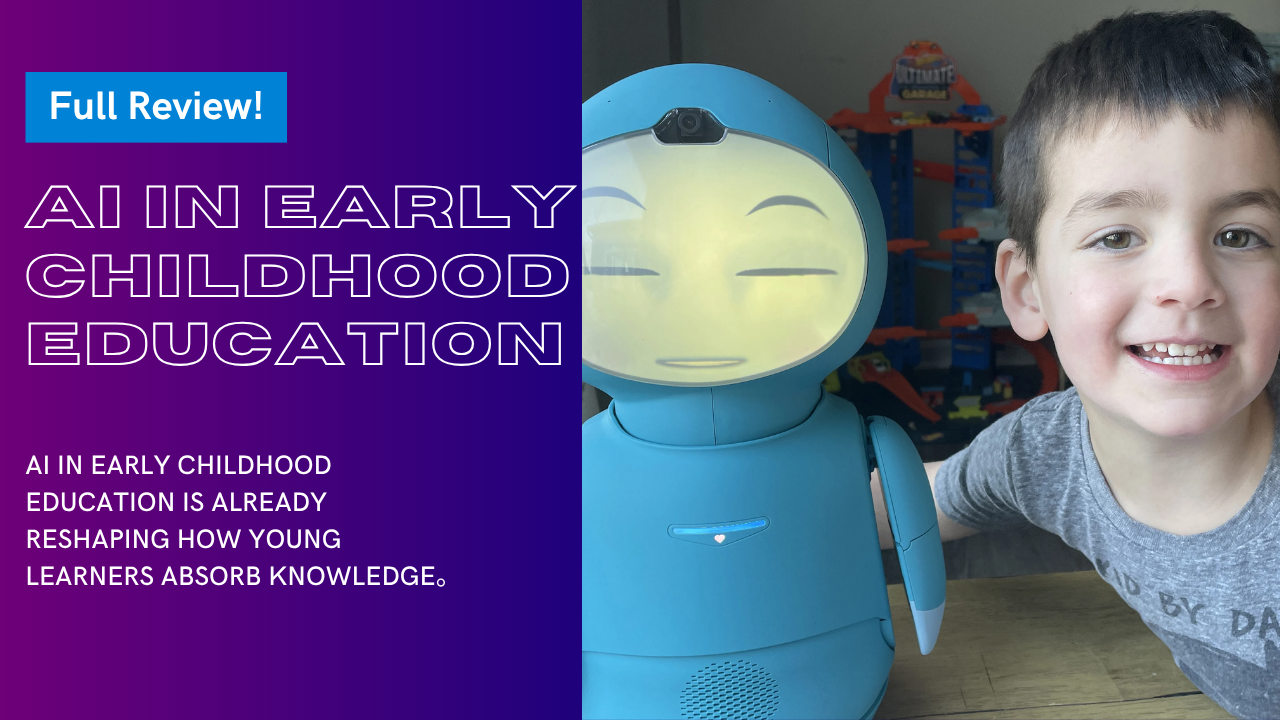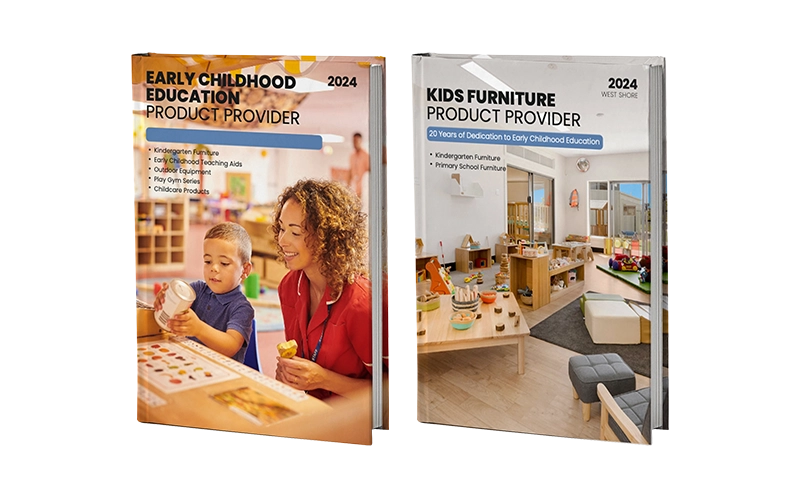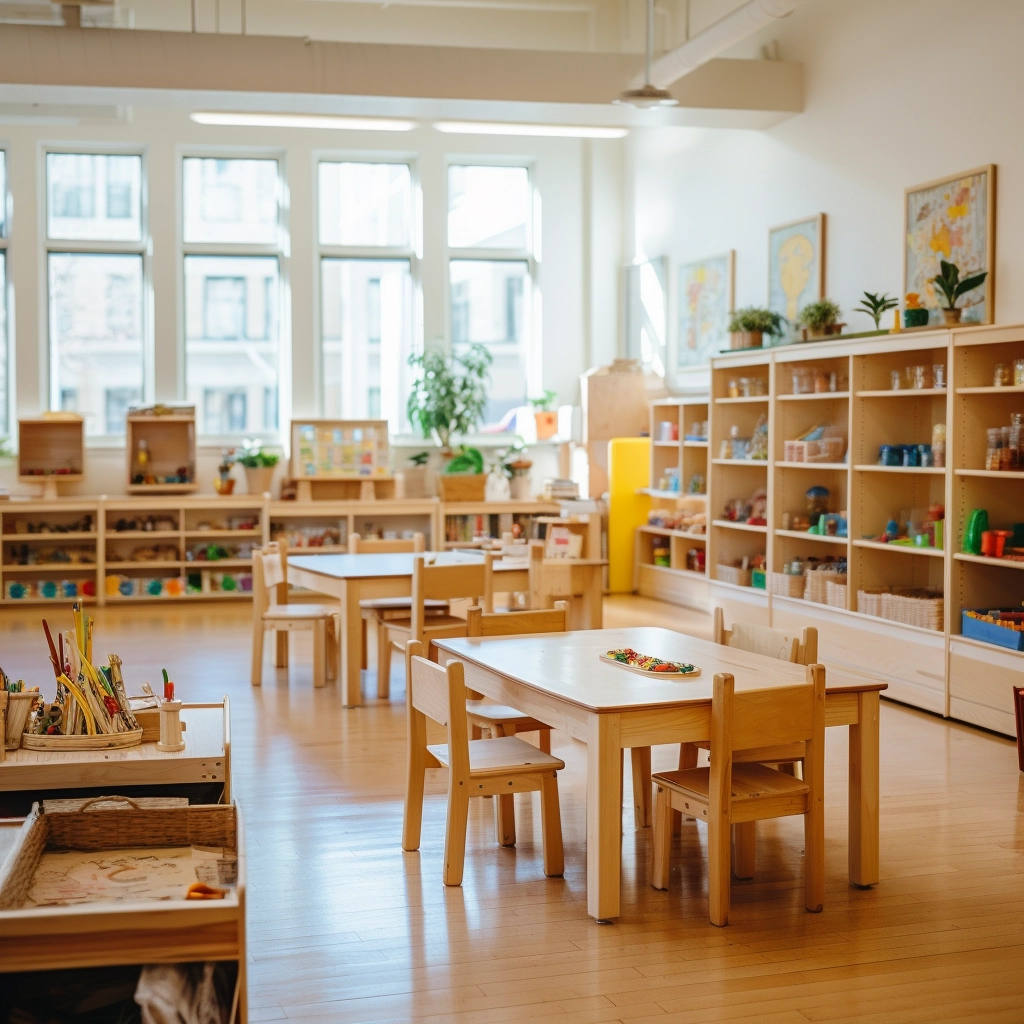Are children learning better with AI?
These questions are no longer speculative. AI in early childhood education is already transforming how young learners absorb information, engage with content, and build foundational skills. The conversation has moved beyond whether this shift will happen—it’s now about how fast.
While the concept may sound futuristic, it’s unfolding rapidly. As Samia Kazi, Middle East Regional Advisor for Childhood Education International, notes, the integration of artificial intelligence into early learning environments is not a distant possibility but an urgent reality. In her article “AI in Early Childhood – Five Things Teachers Need to Know”, initially published in The Blue DOT by the Mahatma Gandhi Institute of Education for Peace and Sustainable Development, Kazi calls on educators to take proactive steps in preparing for this technological shift.
Her insights highlight five essential considerations every educator should understand as AI reshapes the early learning landscape. Let’s explore what this means for teachers, parents, and—most importantly—our youngest learners.

Why Talk About AI in Early Childhood Education Now?
نعيش في زمنٍ يستطيع فيه حتى الأطفال الصغار استخدام جهاز iPad أسرع من معظم البالغين. ينشأ الأطفال الرقميون محاطين بالتكنولوجيا. لكن الذكاء الاصطناعي في تعليم الطفولة المبكرة لا يقتصر على الأدوات البراقة، بل يتعلق بكيفية دعم التعلم الآلي والأتمتة للتطور المعرفي والاجتماعي الحقيقي لدى الأطفال.
يبدأ المعلمون ومؤسسو المدارس وحتى مسؤولي المشتريات مثل مارك من كندا (أحد أكثر عملائنا ولاءً في مجال الأعمال التجارية بين الشركات) في التساؤل عن كيفية دمج الذكاء الاصطناعي دون أن نفقد روح التعليم المبكر.
AI in early childhood education is not about replacing teachers—it’s about enhancing their ability to reach children where they are, at their level, and with what they need most.

ما هو الذكاء الاصطناعي في تعليم الطفولة المبكرة؟
AI in early childhood education (AI ECE) refers to the use of artificial intelligence technologies to enhance teaching, personalize learning, and improve classroom efficiency in early years settings. While AI cannot replace the emotional connection between teacher and child, it can serve as a powerful tool to support educators and enrich the experiences of young learners.
The market for artificial intelligence in ECE is expanding rapidly. A report from Global Market Insights Inc. estimates that the global AI education market will grow from $4 billion in 2022 to $30 billion by 2032. This surge signals a shift in how early learning environments are evolving. As Samia Kazi, Regional Director for Childhood Education International, emphasizes, “We must get engaged and proactive on these topics immediately as educational artificial intelligence is just starting to take its first steps.”
So, how can AI help in early childhood education? Here are several current applications:
- Personalized Learning: AI-powered platforms assess each child’s performance and adjust activities accordingly. This allows children to learn at their own pace, supporting both advanced and struggling learners.
- Interactive Learning Experiences: From gamified apps to AI-driven storytelling and pronunciation tools, AI makes learning more engaging and responsive to each child’s interests.
- Accessibility & Inclusion: Tools powered by AI ECD technology can help children with special needs or language barriers fully participate in classroom activities.
- Early Detection of Learning Challenges: Childhood AI systems can identify signs of developmental delays or learning disabilities, providing teachers and parents with early alerts.
- Classroom Management Support: AI automates administrative tasks like attendance, documentation, and communication with families, giving educators more time to focus on teaching.
In short, AI in early childhood education is reshaping how we approach the early years, not by replacing human connection, but by enhancing it through intelligent, data-informed support.
الأدوات المدعومة بالذكاء الاصطناعي تُستخدم بالفعل في رياض الأطفال
You might be surprised to learn that AI in early childhood education is not a futuristic idea—it’s already part of many preschool classrooms today. Below are some real-world tools and systems that are being integrated into early learning environments, blending traditional pedagogy with modern technology:
- KIBO Robots (developed by KinderLab Robotics): These screen-free coding robots are widely used in early STEM programs. Children program them by arranging wooden blocks with barcodes, which KIBO scans to perform sequences. This tactile experience aligns well with Montessori and Reggio Emilia practices by encouraging open-ended, self-directed exploration, while still introducing foundational logic and problem-solving.
- Osmo Learning System: Used in thousands of kindergartens and early learning centers, Osmo combines physical play (like puzzles, drawing, or number tiles) with AI-powered vision technology. The system’s camera “sees” what children are doing on the table and gives real-time feedback, creating a hybrid play-learning experience that is both engaging and highly personalized. This is a leading example of early learning software that uses AI to guide instruction adaptively.
- StoryBots Classroom (by Netflix and Amplify): While not fully AI in itself, StoryBots has begun integrating machine learning features to customize content recommendations based on what children respond to. Some programs now allow teachers to enter a child’s name or learning goal, resulting in personalized songs and animations that boost vocabulary and concept recall, especially helpful in language acquisition and ESL settings.
- كلاس دوجو: Though widely known for classroom communication and behavior tracking, recent updates to ClassDojo integrate AI-based sentiment analysis. This allows the system to help educators interpret classroom mood trends based on student responses and behavior patterns. It’s used by thousands of preschools globally, including bilingual institutions and Montessori classrooms, as a bridge between educators and families.
- AI-Enabled Interactive Whiteboards: Brands like Promethean and ViewSonic have introduced early education boards with embedded AI. These can recognize gestures, adjust learning content based on attention span and pacing, and allow for multimodal interaction. In some pilot classrooms in Singapore and Finland, these boards are being used in early education robot-assisted lessons, supporting both group collaboration and individual engagement.
Even Montessori-inspired environments, which traditionally favor tactile and nature-based materials, are starting to integrate these intelligent tools in a way that complements—not replaces—their core values. For instance, a Montessori school in San Diego recently introduced Osmo into their literacy corner, using it to support phonics practice while keeping materials self-correcting and hands-on. Similarly, some Reggio Emilia-inspired centers in Australia are piloting voice-based AI assistants that respond to children’s questions during project work, extending the child’s inquiry rather than directing it.
These examples demonstrate that artificial intelligence in ECE is not about turning preschools into digital spaces, but rather about using intelligent systems to enhance observation, support differentiation, and enable more flexible learning pathways, while keeping the educator’s role central.
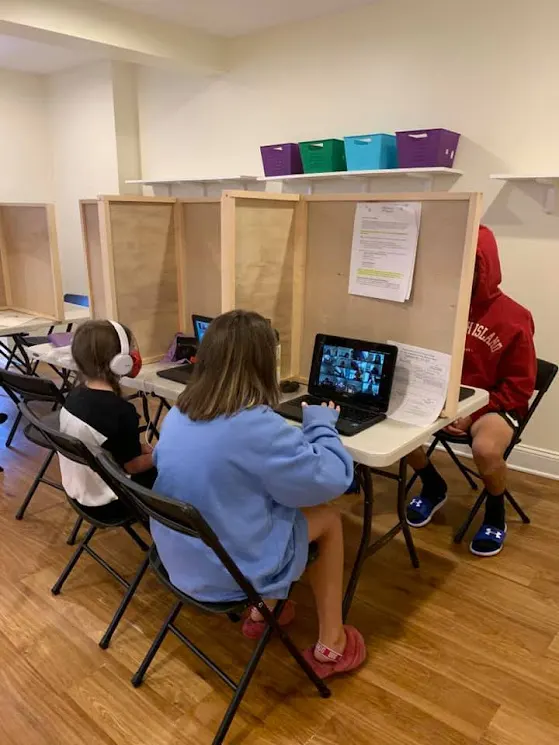
التعلم الشخصي: التغيير الجذري
أحد أكبر الوعود التي تقدمها الذكاء الاصطناعي في مجال تعليم الطفولة المبكرة هو التخصيص الحقيقي.
في الماضي، كان على المعلمين موازنة احتياجات ٢٠-٣٠ طالبًا بخطة درس واحدة. الآن، يُساعد الذكاء الاصطناعي في تحديد:
- أي طفل يعاني من مفهوم
- أي طفل يحتاج إلى مواد أكثر تقدمًا؟
- كيف يحتفظ المتعلمون المختلفون بالمعرفة؟
هذا يعني عدم إجبار الأطفال أو إجبارهم على بذل جهد كبير. يتم التعامل معهم على مستوى قدراتهم. وهذا أمر بالغ الأهمية في السنوات الحرجة من 0 إلى 6 سنوات، عندما يبلغ نمو الدماغ ذروته.
يقرأ نظام مثل SmartyPal كيفية تفاعل الطفل مع كتاب القصص ويضبط الكتب المستقبلية وفقًا لذلك، وهو مثال مثالي للذكاء الاصطناعي الذي يعزز المشاركة العميقة بدلاً من وقت الشاشة السلبي.
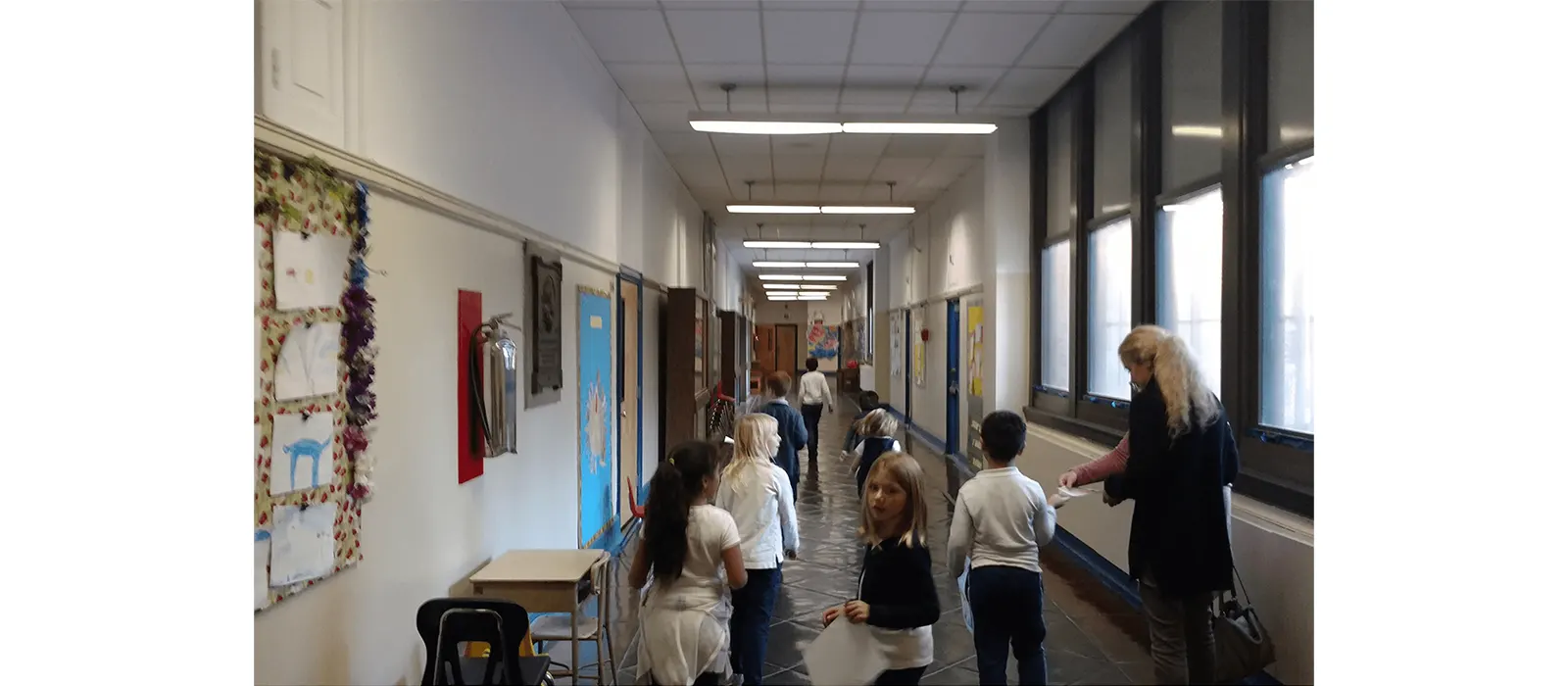
Be mindful of children’s screen time
يقلق الآباء والمعلمون بشأن قضاء الأطفال وقتًا طويلاً أمام الشاشات أو فقدان التواصل الإنساني. ويجب عليهم ذلك.
ولكن هنا يكمن السر: إن الذكاء الاصطناعي في تعليم الطفولة المبكرة يعمل بشكل أفضل كمكمل، وليس بديلاً، للتفاعل الحقيقي.
عندما نساعد العملاء في تصميم فصول رياض الأطفال الخاصة بهم، فإننا نوصي دائمًا بدمج اللعب العملي والتعلم الاجتماعي إلى جانب الأدوات الرقمية.
نؤمن بالفصول الدراسية الهجينة، حيث تدعم التكنولوجيا التعلم الحسي والتعاوني والحركي. الذكاء الاصطناعي لا يعني بالضرورة العزلة. الاستخدام الحكيم يُعزز التواصل والتعاطف من خلال تحديد المشاعر واقتراح أنشطة اللعب الجماعي.
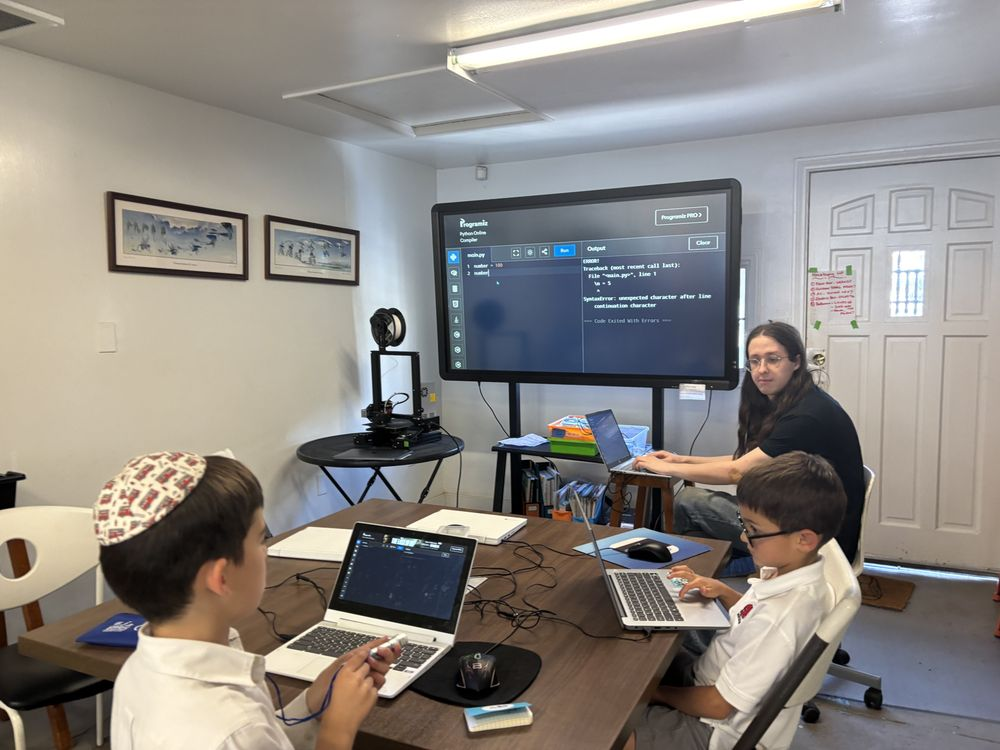
Teachers and AI combine to teach
AI will never replace great teachers. But it can make them even better.
تخيل أن المعلمة تبدأ يومها بلوحة معلومات تظهر:
- أي الأطفال قضوا ليلة صعبة (عبر أجهزة تتبع النوم الذكية)
- من من المرجح أن يواجه صعوبة في مهمة القراءة اليوم؟
- أي الأطفال يزدهرون عاطفياً؟
وباستخدام هذه البيانات، يمكن للمعلمين اتخاذ قرارات أكثر ذكاءً، والتخطيط لأنشطة أفضل، والتواصل بشكل أعمق مع طلابهم.
يساعد الذكاء الاصطناعي في تعليم الطفولة المبكرة المعلمين على القيام بما يجيدونه بشكل أفضل - التواصل مع الأطفال.
التحديات والاعتبارات الأخلاقية
بالطبع، ليس كل شيء مشمسًا ووقتًا أمام الشاشات. بصفتي رئيسًا تنفيذيًا مهتمًا بمجال التعليم المبكر، أؤكد دائمًا على الاستخدام المسؤول للذكاء الاصطناعي لعملائنا وشركائنا.
وفيما يلي المخاوف الرئيسية:
1. خصوصية البيانات
الأطفال الصغار معرضون للخطر. يجب على منصات مثل قانون حماية خصوصية الأطفال على الإنترنت (COPPA) واللائحة العامة لحماية البيانات (GDPR) الالتزام بلوائح صارمة عند استخدامها في أوروبا.
2. الاعتماد المفرط على التكنولوجيا
ينبغي أن يدعم الذكاء الاصطناعي التعلم والعلاقات في الحياة الواقعية، لا أن يحل محلهما. الإفراط في استخدامه قد يعيق اللعب الطبيعي والاستكشاف والترابط الاجتماعي.
3. التحيز في الخوارزميات
إذا لم تُصمَّم أنظمة الذكاء الاصطناعي بعناية، فقد تُعزِّز التحيزات الثقافية أو الجندرية. يجب على الشركات والمعلمين ضمان استخدام مجموعات بيانات شاملة ومتنوعة في التطوير.
4. المساواة والوصول
لا تتمتع جميع المدارس بفرص متساوية للوصول إلى التكنولوجيا. فقيود الميزانية، ونقص البنية التحتية، وقلة تدريب الموظفين، كلها عوامل قد تمنع العديد من رياض الأطفال، وخاصة في المناطق الريفية أو النامية، من الاستفادة من أدوات الذكاء الاصطناعي. يجب على مقدمي التكنولوجيا التعليمية وصانعي السياسات التركيز على ابتكار حلول ذكاء اصطناعي ميسورة التكلفة ومنخفضة التقنية، قابلة للتطوير والتنفيذ حتى في البيئات محدودة الموارد. يجب أن يكون الإنصاف أولوية أساسية لضمان عدم تخلف أي طفل عن الركب في هذا التحول الرقمي.
دعونا لا ننسى أن التكنولوجيا تعكس الغاية منها. يجب أن يرتكز الذكاء الاصطناعي في تعليم الطفولة المبكرة على التعاطف والإنصاف والأخلاق.
ما يحمله المستقبل للذكاء الاصطناعي في تعليم الطفولة المبكرة
إلى أين يتجه كل هذا؟
في السنوات الخمس إلى العشر القادمة، أعتقد أننا سنرى:
- مساعدو المعلمين المدعومون بالذكاء الاصطناعي في كل فصل دراسي
- الترجمة متعددة اللغات في الوقت الفعلي للمجتمعات المتنوعة
- منصات التعلم التي تستشعر المشاعر والتي تتكيف ليس فقط مع المهارات ولكن أيضًا مع الحالات المزاجية
- عوالم التعلم الواقع الافتراضي والواقع المعزز المعززة بالذكاء الاصطناعي لمحاكاة تجارب العالم الحقيقي
- أدوات تصميم الفصول الدراسية المدعومة بالذكاء الاصطناعي لبناء بيئات تركز على الطفل بناءً على بيانات النمو
يستكشف العديد من مقدمي التعليم المبكر ذوي التفكير المستقبلي الجمع بين أثاث ما قبل المدرسة المريح ومحطات التعلم الذكية، وإنشاء فصول دراسية تدعم اللعب العملي والتعلم الرقمي.
والأفضل من ذلك؟ أصبح هذا النوع من التكنولوجيا أكثر توفرًا وبأسعار معقولة عالميًا. حتى المدارس ذات الميزانيات المحدودة يمكنها الآن البدء بدمج الذكاء الاصطناعي في بيئاتها التعليمية دون التضحية بالجودة أو الإنفاق الزائد.
خاتمة
الذكاء الاصطناعي في تعليم الطفولة المبكرة ليس مجرد توجه، بل هو تحوّل. عند استخدامه بحكمة، يُمكّن المعلمين، ويُشرك الأطفال، ويُهيئ الجيل القادم لمستقبل أكثر إشراقًا.
مع استمرار هذا التحول، تزداد أهمية توفير البيئة المناسبة لدعم كلٍّ من التعلم التقليدي والتقنيات الناشئة. وهنا يكمن دور الشركاء ذوي الخبرة في إحداث فرق كبير.

